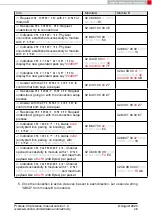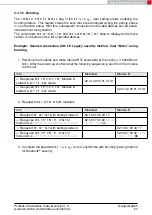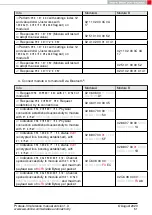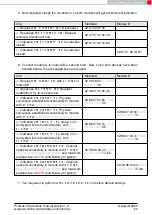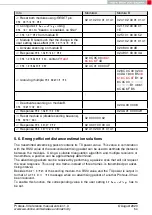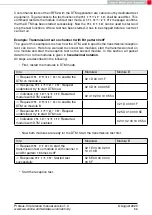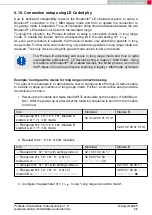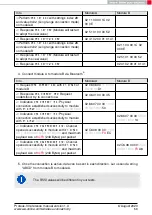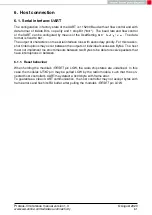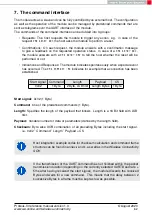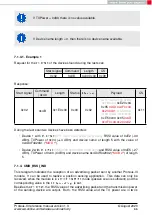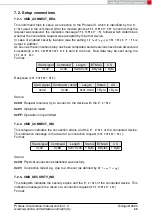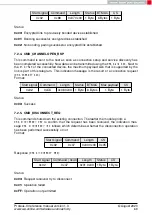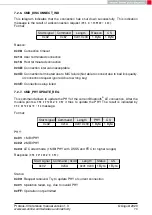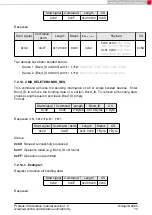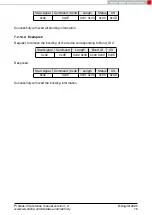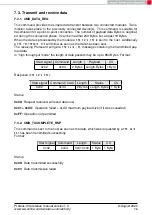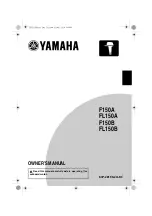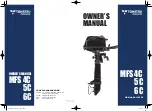
7. The command interface
The module acts as a slave and can be fully controlled by an external host. The configuration
as well as the operation of the module can be managed by predefined commands that are
sent as telegrams over the UART interface of the module.
The commands of the command interface can be divided into 3 groups:
• Requests: The host requests the module to trigger any action, e.g. in case of the
request
the host asks the module to perform a reset.
• Confirmations: On each request, the module answers with a confirmation message
to give a feedback on the requested operation status. In case of a
the module answers with a
to tell the host whether the reset will be
performed or not.
• Indications and Responses: The module indicates spontaneously when a special event
has occurred. The
indicates for example that a connection has been
established.
Start signal
Command
Length
Payload
CS
0x02
1 Byte
2 Byte, LSB first
Length Bytes
1 Byte
Start signal:
0x02 (1 Byte)
Command:
One of the predefined commands (1 Byte).
Length:
Specifies the length of the payload that follows. Length is a 16 Bit field with LSB
first.
Payload:
Variable number of data or parameters (defined by the length field).
Checksum:
Byte wise XOR combination of all preceding Bytes including the start signal,
i.e. 0x02 ˆ Command ˆ Length ˆ Payload = CS
Host integration example codes for checksum calculation and command frame
structure can be found in annex
and
, as well as in the
If the transmission of the UART command has not finished within the packet
transmission duration (depending on the currently selected UART Baud rate +
5ms after having received the start signal), the module discards the received
Bytes and waits for a new command. This means that the delay between 2
successive Bytes in a frame must be kept as low as possible.
Proteus-III reference manual version 1.3
© August 2020
www.we-online.com/wireless-connectivity
62

